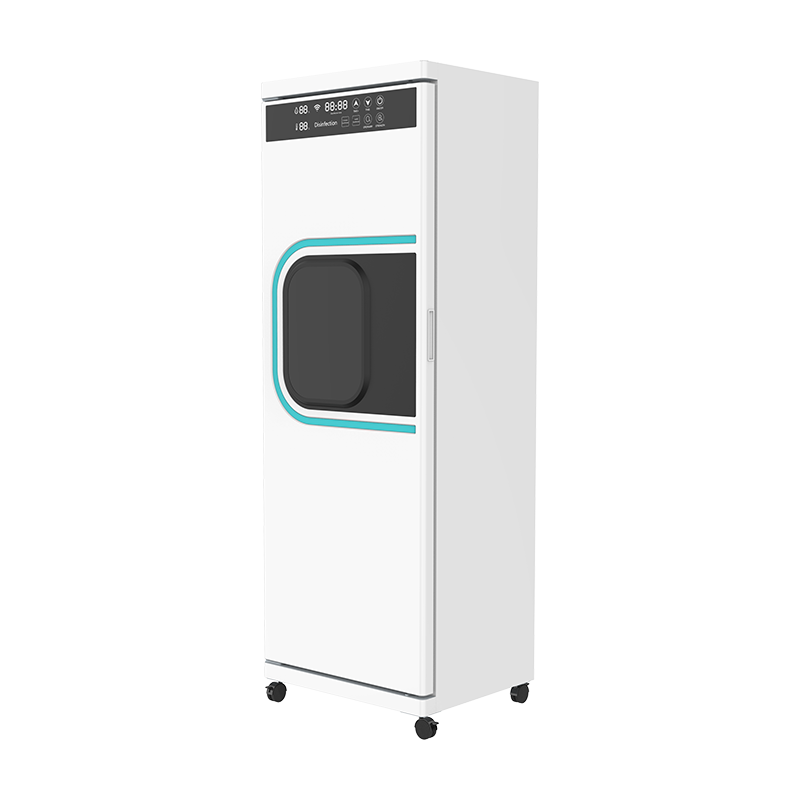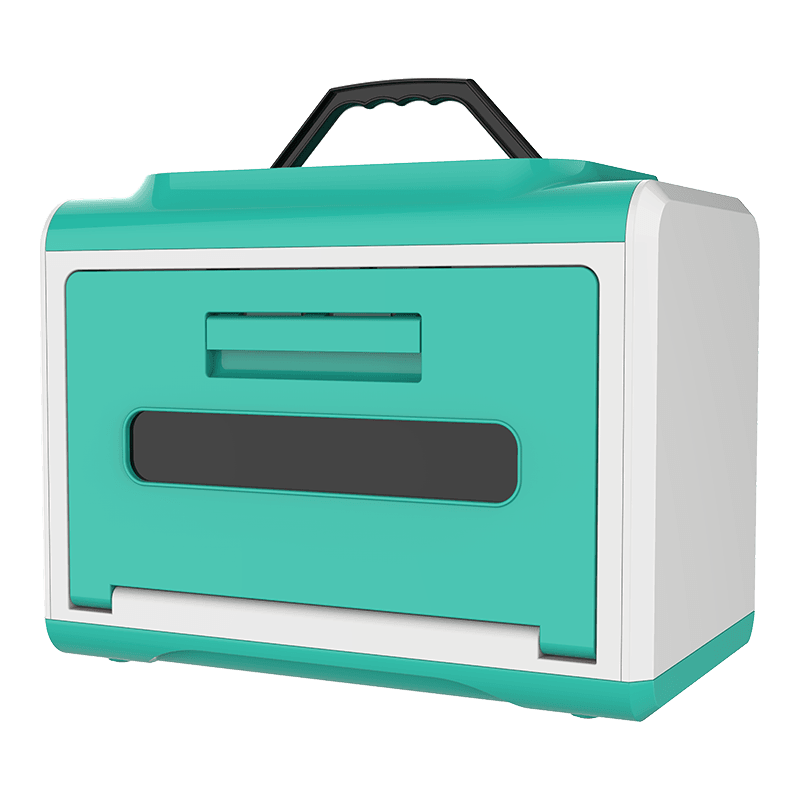Correct use steps of disinfection cabinet
Classify and store items to be disinfected
High temperature resistant items (metal instruments, glassware, ceramic tableware) → high temperature disinfection layer (120℃~135℃)
Non-high temperature resistant items (plastics, silicone, latex, some medical devices) → ozone/ultraviolet disinfection layer (≤60℃)
Special medical supplies (endoscopes, catheters) → must comply with YY/T 0506 standard, select special sterilization mode
Pretreatment: cleaning and drying
Thorough cleaning: food residues, blood, organic residues will affect the sterilization effect (especially surgical instruments need enzyme washing first)
Drain thoroughly: avoid water stains that cause high temperature steam burns or reduce the efficiency of ozone disinfection
Place properly to avoid overlapping
Metal instruments: lay flat to avoid stacking to block ultraviolet rays or hot air circulation
Bowls, plates and cups: turn upside down or sideways to ensure that the inside can also be fully disinfected
Plastic products: avoid contact with heating tubes to prevent deformation
Choose the appropriate disinfection mode
|
Disinfection method |
Applicable items |
Temperature/time |
Precautions |
|
High temperature steam |
Metal, ceramic, glass |
120℃~135℃, 15~30min |
No plastic or rubber |
|
UV + ozone |
Plastic, silicone, baby bottles |
≤60℃, 30~60min |
Lamp needs to be replaced regularly |
|
Plasma sterilization |
Precision medical equipment |
Low temperature, 45~60min |
Medical grade equipment only |
Misunderstandings in the use of disinfection cabinets: Which items must not be put into high temperature sterilization?
- Explosive and flammable substances (high-risk taboos)
Nitrate compounds: such as nitroglycerin and nitrocellulose filters, which can cause explosions at high temperatures
Metallic lithium/sodium/potassium: react violently with water vapor, corrode the inner tank of the equipment and may explode
Organic peroxides: the decomposition temperature of peracetic acid, benzoyl peroxide, etc. is lower than the sterilization temperature (above 120°C)
- Plastic and melamine products (toxicity risk)
Ordinary plastic tableware: PE/PP materials deform at high temperatures of 120°C, releasing toxic substances such as bisphenol A
Painted melamine tableware: formaldehyde resin decomposes at high temperatures, and heavy metal glaze precipitates and contaminates food
- Metal products and electronic equipment
Aluminum tableware: high temperatures cause oxidation deformation and damage the surface protective layer
Items containing batteries: high temperatures cause battery explosions, such as electronic thermometers and pacifier thermometers
- Chemicals and medical supplies
Alcohol/solvents: the ignition point is lower than the sterilization temperature (such as ethanol ignition point 12°C), and the vapor concentration reaches 3% and then explodes
Medicines and vaccines: High temperature denatures proteins, such as insulin and antibiotics, which are completely ineffective
- Instruments made of special materials
Ethylene oxide sterilized instruments: catheters, surgical gowns, etc. that have been sterilized at low temperatures, high temperatures will destroy the molecular structure
Mercury-containing equipment: mercury vapor in thermometers and sphygmomanometers is highly toxic and corrosive to stainless steel liner
- Textiles and paper products
Synthetic fiber fabrics: nylon and polyester melt and adhere to the inner wall, blocking the ultraviolet holes
Books and documents: high temperature carbonizes paper, and ozone disinfection will cause the handwriting to fade
- Other high-risk items
Undried tableware: residual water stains generate steam pressure, damage the sealing ring and reduce the sterilization efficiency
Glass milk bottles: sudden cooling and heating are prone to bursting, so borosilicate heat-resistant glass should be used
Scientific use suggestions:
Power on at least once a week to dehumidify and sterilize, and avoid long-term use as a locker
If plastic products need to be disinfected, a dedicated layer of ozone + low temperature (≤60℃) mode should be selected

 EN
EN
 English
English 中文简体
中文简体
.png)









